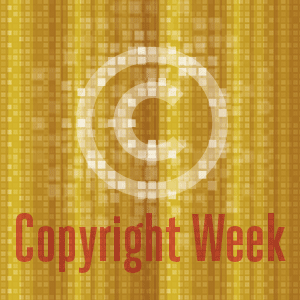 [Cross posted from CCUSA, Link (CC-BY)] Much of what we hear about the globalization of copyright law around the world does not favor users. The dominant trend of lengthening terms, increasing criminalization and “deterrent” penalties and expanding third party liability has the intent and effect of privatizing more and more of the public domain. But one trend moves in the opposite the direction – the recent shift toward a global expansion of fair use.
[Cross posted from CCUSA, Link (CC-BY)] Much of what we hear about the globalization of copyright law around the world does not favor users. The dominant trend of lengthening terms, increasing criminalization and “deterrent” penalties and expanding third party liability has the intent and effect of privatizing more and more of the public domain. But one trend moves in the opposite the direction – the recent shift toward a global expansion of fair use.
The term “fair use” is often used to refer the specific limitation and exception to copyright contained in the US Copyright Act, 17 U.S.C. § 107. But it has also come to have a broader meaning – as any flexible limitation and exception that turns on a number of balancing factors surrounding the fairness of a particular unauthorized use of copyrighted content rather than compliance with a closed list of specific authorized uses contained in a statute. Such flexible user right clauses have distinct advantages in a rapidly changing society – they allow implementing authorities and judges to find particular unauthorized uses to be lawful even if they were not contemplated and specifically listed at the time one’s copyright law was enacted.
Despite the strong policy reasons for enacting flexible fair use clauses in all copyright laws, many laws do not have such clauses. One of the main objections has been a belief that fair use clauses are not well adapted to civil law legal systems.
The Global Network on Copyright Users’ Rights was formed to generate policy options and expert guidance on the protection of users’ rights through flexible limitations and exceptions. This objective was outlined in the Washington Declaration on Intellectual Property and the Public Interest, drafted at the inaugural Global Congress on Intellectual Property and the Public Interest at American University Washington College of Law in August 2011. The Washington Declaration called for “discussion of employing ‘open-ended’ limitations in national copyright legislation, in addition to specific exceptions.” The Users’ Rights Network was created to answer that call.
The Network has published a set of documents drafted through a year-long consultative process with a broad group of copyright scholars and experts from across the spectrum of legal systems. Most importantly, the network crafted a Model Flexible Copyright Exception designed to be adaptable in general form to most copyright laws – including those in common and civil law systems.
The model has two main parts. The core of the proposal is a general balancing test that could be added as a general clause to any existing list of limitations and exceptions. That provision states:
In addition to uses specifically authorized by law, any use that promotes general economic, social and cultural objectives is not infringing if its character and extent is appropriate to its purposes and does not unduly prejudice the legitimate interests of the copyright owner, taking account of the legitimate interests of creators, users, third parties and the public.
The second part of the model provides a more specific set of balancing factors that could be adopted in addition to the general clause to give additional guidance in its interpretation and implementation.
The Network also created a number of explanatory and reference materials. Appendix I identifies a long list of Presumptively Lawful Uses created through a survey of limitations and exceptions included in many copyright laws around the world. It is noteworthy that no copyright law with a closed list of limitations and exceptions that we have reviewed include protection for every one of the purposes listed – an argument in itself for including a flexible exception in every copyright law. This list could be used to guide the interpretation of the general clause — indicating to users as well as courts and enforcement officials the kinds of uses that should be considered presumptively lawful under the general clause.
Appendix II provides examples of flexible exceptions from existing copyright laws or proposals from around the world. These examples of general clauses that provide flexibility in limitations and exceptions influenced the Network in its work. The examples may give policy-makers another starting point for considering the crafting of their own flexible exception clause.
Appendix III provides some short responses to frequently asked questions about flexible copyright exceptions.
The network has also engaged in subsequent research, analysis and technical assistance — some of the products of which are posted in the Additional Resources section below the Primary Documents.
The resources from the Global Expert Network can be found at http://infojustice.org/flexible-use




